www.italianialondra.it
Londra vissuta dagli Italiani ...
Leyton Midland Road
Sintesi
Leyton Midland Road è una stazione della Overground che serve l'area detta in passato Low Leyton (Low = basso). Il perché fu efficacemente spiegato dallo Storico John Strype (in "A Survey of the Cities of London and Westminster, 1720): "A nord di Stratford Langton, a circa un Miglio e Mezzo, giace la Parish di Low Leighton o Leyton. Il cui Manor o Signoria in passato appartennero all'Abate della detta Stratford .... Questa Parish è bagnata lungo il Lato Occidentale del dolce Fiume Lee o Ley (che confluisce nel Tamigi), che dà al Villaggio il suo Nome. Si trova tutta su un gentile rialzo, che sale per due miglia o più, dal detto Fiume verso est alla piacevole Foresta di Waltham. Dal quale lato si trova un Distretto della Parish, chiamato Leytonstone, piacevolmente e sanamente collocato. Low Leyton situato sul Lato della Collina, in quanto è più basso, quindi è più caldo, ed è protetto dal freddo a Nord dalle Colline della sua Vicina Cittadina di Walthamstow.". Il Fiume Lea marcava il confine occidenale dell'antica Parish, mentre quello settentrionale, condiviso con Walthamstow, correva diritto per 3 miglia dalla Foresta di Epping al Fiume Lea, e la sezione di Lea Bridge Road da Whipps Cross Road a Knotts Green Road potrebbe seguire il tracciato di una strada Romana. Dal XVIII secolo, la maggior parte della palude era stata convertita in fertili terreni agricoli. In tale secolo, i libri del tempo descrivono il Villaggio di Low Leyton come "un bel posto in cui isolarsi da Londra", per giunta "dotato di diverse fiere, ed alcune magnifiche case abitate da vari ricchi Cittadini ed altri Gentiluomini.". Questa bella immagine, però, col passare del tempo andò alquanto deteriorandosi: "Calamità, e la mano del 'miglioratore' moderno hanno avuto un tremendo impatto su Leyton, e poco ora rimane a richiamare il suo antico carattere. Una mappa della Parish pubblicata nel 1777 mostra il villaggio contenere un buon numero di posti importanti. La fatiscenza ha intaccato alcune (costruzioni), il fuoco ne ha distrutto almeno una, e le scarse superstiti si riducono ogni anno a causa del flusso costante dei milioni di Londra. La parte finale dello scorso secolo (ndr XIX) ha visto la scomparsa di Leyton Grange (1861), Leyton Manor House (1884) e Phillibrook House (1889), le tenute in ciascun caso venendo frazionate in lotti edificabili e le case demolite ....".
Distanza dal centro: 7,8 miglia.
Attrattiva: scarsa.
Descrizione dell'area attorno alla stazione
Uscendo dalla stazione, siete sovrastati dall'imponente Ponte su cui corre l'Overground. Vi trovate vicino all'incrocio tra Midland Road e High Road Leyton. Quest'ultima si prolunga in direzione sud-est/nord-ovest, mostrandovi, in prevalenza, il tipico contesto suburbano londinese, con casette ad uno o due piani e negozi a livello stradale. Seguitela, ed una volta raggiunto l'incrocio con Lea Bridge Road, la strada cambia nome in Hoe Street. Proseguendo diritto, raggiungerete la stazione di Walthamstow Central, o deviando prima verso sinistra (ovest), quella di Walthamstow Queen's Road.
Toponimo
Relativamente alla prima parola, rinviamo alla pagina dedicata a Leyton. "Midland Road" è la strada che affianca la linea della Overground accanto alla stazione.
Storia
Le informazioni fondamentali sulla Storia dell'area sono fornite da William Dugdale in "Monasticon Anglicanum, or, The history of the ancient abbies, and other monasteries, hospitals, cathedral and collegiate churches in England and Wales. With divers French, Irish, and Scotch monasteries formerly relating to England" (1693); da Richard Newcourt in "Repertorium Ecclesiasticum Parochiale Londinense ....", Volume 2 (1710), pagine 380-382; da John Strype in "A Survey of the Cities of London and Westminster" (1720), che aggiorna ed integra "A Survay of London" di John Stowe (1598, 1603); si leggono in "Rymer's Foedera Volume 8" (1739-1745), alla voce "Rymer's Foedera with Syllabus: January 1400" (pagine 119-124); sono fornite da Philip Morant in "The History and Antiquities of the County of Essex: Compiled from the Best and Most Ancient Historians; from Domesday-book, Inquisitiones Post Mortem, and Other the Most Valuable Records and Mss. &c., the Whole Digested, Improved, Perfected, and Brought Down to the Present Time" Volume 1 (1768), pagina 24; da John Chapman - Peter André in "Mappa dell'Essex (1777), Fogli XVI, XXI; da Daniel Lysons in "The Environs of London: Volume 4, Counties of Herts, Essex and Kent" (1796), alle voci "Leyton" (pagine 158-182), "Walthamstow" (pagine 204-230), "Wansted" (pagine 231-244), "West Ham" (pagine 245-272), "Woodford" (pagine 273-287), "Table of population" (pagine 571-572), "Market gardens in London" (pagine 573-576); da Edward Hasted in "The History and Topographical Survey of the County of Kent: Volume 2" (1797), alla voce "Parishes: Eynsford" (pagine 527-539); da Thomas Kitson Cromwell in "Excursions in the County of Essex" Volume 1 (1818); da Walter Thornbury in "Old and New London: Volume 2" (1878), alla voce "The Tower: (part 2 of 2)" (pagine 77-95); si leggono in "Calendar of Wills Proved and Enrolled in the Court of Husting, London: Part 1, 1258-1358" (1889), alle voci "Wills: 10 Edward I (1281-2)" (pagine 55-60), "Wills: 12 Edward III (1338-9)" (pagine 425-430), "Wills: 26 Edward III (1352-3)" (pagine 656-667); si leggono in "Alumni Oxonienses 1500-1714" (1891), alla voce "Tracie-Tyson" (pagine 1501-1528); in "Middlesex County Records: Volume 4, 1667-88" (1892), alla voce "Sir Baptist Hicks" (pagine 329-349), in "A Calendar To the Feet of Fines For London and Middlesex: Volume 1, Richard I - Richard III" (1892), alle voci "Fines for divers and other counties: Edward I" (pagine 218-221) e "Fines for divers and other counties: Edward III" (pagine 224-230); in "A Calendar To the Feet of Fines For London and Middlesex: Volume 2, Henry VII - 12 Elizabeth" (1893), alla voce "London and Middlesex Fines: Mary" (pagine 86-89); in "A Descriptive Catalogue of Ancient Deeds: Volume 2 (1894), alle voci "Deeds: B.1901 - B.2000" (pagine 242-253) e "Deeds: B.2301 - B.2400" (pagine 286-298); sono fornite da John Kennedy in "History of Leyton, Essex - With maps and illustrations" (1894); da Frederic William Wilkinson in "A History of Leyton" (1897); si leggono iin "Feet of fines for Essex Volume 1" (1899); in "Calendar of Wills Proved and Enrolled in the Court of Husting, London: Part 1, 1258-1358" (1889), alle voci "Wills: 3 Edward III (1329-30)" (pagine 343-355) e "Wills: 31 Edward III (1357-8)" (pagine 694-701); in "Calendar of Letter-Books of the City of London: D, 1309-1314" (1902), alle voci "Folios lxi - lxx" (pagine 157-179) e "Folios xxxi - xl" (pagine 85-106); sono fornite da Edwin Gunn in "Survey of London Monograph 4, the Great House, Leyton" (1903); in "Calendar of Letter-Books of the City of London: E, 1314-1337" (1903), alle voci "Folios lxx b - lxxviii b: May 1318" (pagine 84-93) e "Folios ci - cxi b: March 1319-20" (pagine 117-134); in "Calendar of Treasury Books, Volume 1, 1660-1667" (1904), alla voce "Entry Book: July 1662" (pagine 404-414); in "Letters and Papers, Foreign and Domestic, Henry VIII, Volume 20 Part 1, January-July 1545" (1905), alla voce "Henry VIII: June 1545, 26-30" (pagine 500-532); in "The Medieval Records of A London City Church St Mary At Hill, 1420-1559" (1905), alla voce "Churchwardens' accounts: 1496-7" (pagine 221-227); in "A Descriptive Catalogue of Ancient Deeds: Volume 5" (1906), alle voci "Deeds: A.11901 - A.12000" (pagine 214-228) e "Deeds: A.13601 - A.13672" (pagine 548-565); in "A History of the County of Essex: Volume 2" (1907), alla voce "Houses of Cistercian monks: Abbey of Stratford Langthorne" (pagine 129-133); in "Letters and Papers, Foreign and Domestic, Henry VIII, Volume 21 Part 1, January-August 1546" (1908), alla voce "Henry VIII: April 1546, 26-30" (pagine 334-359); in "Calendar of Treasury Books, Volume 3, 1669-1672" (1908), alla voce "Entry Book: September 1672" (pagine 1302-1319) in "A History of the County of London: Volume 1, London Within the Bars, Westminster and Southwark" (1909), alla voce "Austin canons: Priory of Holy Trinity or Christchurch, Aldgate" (pagine 465-475); in "Calendar of Treasury Books, Volume 5, 1676-1679" (1911), alla voce "Entry Book: January 1678, 16-31" (pagine 885-902); in "A Descriptive Catalogue of Ancient Deeds: Volume 6" (1915), alla voce "Deeds: C.5701 - C.5800" (pagine 256-267); in "Calendar of Treasury Books, Volume 7, 1681-1685" (1916), alla voce "Entry Book: January 1685, 12-20" (pagine 1489-1509); sono fornite da J. E. E. S. Sharp - E. G. Atkinson - J. J. O'Reilly - G. J. Morris, in "Calendar of Inquisitions Post Mortem: Volume 9, Edward III" (1916), alle voci "Inquisitions Post Mortem, Edward III, File 84" (pagine 13-29) e "Inquisitions Post Mortem, Edward III, File 103" (pagine 289-309); da W. H. Weston in "The Story of Leyton and Leytonstone" (1921); si leggono in "An Inventory of the Historical Monuments in Essex, Volume 2, Central and South west" (1921), alle voci "Sectional Preface" (pagine xxviii-xxxviii) e "Low Leyton" (pagine 166-168); in "Survey of London: Volume 8, Shoreditch (1922), alla voce "The Augustinian Priory of St. John the Baptist, Holywell" (pagine 153-187); sono fornite da Minnie Reddan - Alfred W. Clapham, in "Survey of London: Volume 9, the Parish of St Helen, Bishopsgate, Part I" (1924), alla voce "St. Helen's Bishopsgate: History; pre-Reformation period" (pagine 1-18); si leggono in "Calendar of Treasury Books, Volume 10, 1693-1696" (1935), alle voci "Entry Book: March 1693, 16-20" (pagine 101-109) e "Entry Book: March 1693, 21-25" (pagine 109-127); in "County of Middlesex. Calendar To the Sessions Records: New Series, Volume 1, 1612-14" (1935), alle voci "Sessions, 1612: 1 and 2 December" (pagine 1-5), "Sessions, 1613: 1 and 2 December" (pagine 261-307), "Sessions, 1614: 5 and 6 May" (pagine 400-452); in "Calendar of Treasury Books, Volume 18, 1703" (1936), alla voce "Warrant Book: July 1703, 1-15" (pagine 322-339); in "County of Middlesex. Calendar To the Sessions Records: New Series, Volume 4, 1616-18" (1941), alla voce "Sessions, 1617: 1 and 2 May" (pagine 120-161); sono fornite da E. B. Gover - A. Mawer - F. M. Stenton, con la collaborazione di S. J. Madge in "The Place-Names of Middlesex, apart from the City of London" (1942); si leggono in "Survey of London: Volume 22, Bankside (The Parishes of St. Saviour and Christchurch Southwark)" (1950), alla voce "Hopton Street" (pagine 111-114); in "Two Early London Subsidy Rolls" (1951), alla voce "Subsidy Roll 1319: Tower ward" (pagine 344-350); sono fornite da George Edward Roebuck in "The Story of Walthamstow" (1952); si leggono in "Calendar of Close Rolls, Edward IV, Edward V, Richard III 1476-1485" (1954), alla voce "Close Rolls, Edward IV: 1476-1478" (pagina 92); in "London Possessory Assizes: A Calendar" (1965), alla voce "Calendar of assize rolls: Roll AA" (pagine 1-45); in "A History of the County of Essex: Volume 5" (1966), alle voci "Metropolitan Essex since 1850: Population growth and the built-up area" (pagine 2-9), "Metropolitan Essex since 1919: Suburban growth" (pagine 63-74), "Metropolitan Essex since 1919: The Second World War and after" (pagine 90-92), "The hundred of Becontree: Introduction" (pagine 181-183); in "A History of the County of Middlesex: Volume 1, Physique, Archaeology, Domesday, Ecclesiastical Organization, the Jews, Religious Houses, Education of Working Classes To 1870, Private Education From Sixteenth Century" (1969), alla voce "Religious Houses: Houses of Augustinian canonesses" (pagine 170-182); in "The Cartulary of Holy Trinity, Aldgate" (1971), alla voce "Charters of several parishes" (pagine 199-211); in "A History of the County of Essex: Volume 6" (1973), alle voci "West Ham: Ancient mills" (pagine 89-93), "Leyton: Introduction" (pagine 174-184), "Leyton: Manors and estates" (pagine 184-197), "Leyton: Economic history, marshes and forests" (pagine 197-205), "Leyton: Local government and public services" (pagine 205-214), "Leyton: Parliamentary representation" (pagina 214), "Leyton: Churches" (pagine 214-223), "Walthamstow: Manors" (pagine 253-263), "Wanstead: Manors" (pagine 322-327); sono fornite da A. K. McHardy in "The Church in London, 1375-1392" (1977), alla voce "Acta of William Courtenay, Bishop of London: Dec 1378 - Oct 1381 (nos 598-652)" (pagine 84-92); da< J< . L. Kirby in "Calendar of Inquisitions Post Mortem: Volume 18, Henry IV" (1987), alla voce "Inquisitions Post Mortem, Henry IV, Entries 153-204" (pagine 50-62); da D. J. Keene - Vanessa Harding in "Historical Gazetteer of London Before the Great Fire Cheapside; Parishes of All Hallows Honey Lane, St Martin Pomary, St Mary Le Bow, St Mary Colechurch and St Pancras Soper Lane" (1987), alla voce "St. Pancras Soper Lane 145/3" (pagina 662); si leggono in "London Consistory Court Depositions, 1586-1611: List and Indexes" (1995), alla voce "Depositions: 1610" (pagine 232-272); in "A History of the County of Middlesex: Volume 10, Hackney" (1995), alla voce "Hackney: Economic History" (pagine 92-101); sono fornite da Margaret Pelling - Frances White in "Physicians and Irregular Medical Practitioners in London 1550-1640 Database"(2004), alla voce "JENKINS, Matthew or Matthias"; da David Ian Chapman in "Leyton House and the Walthamstow Slip" (2007) ed in "The Grange - With emphasis on the Lane Family and the Slave Trade" (2007) entrambe edite da "Leyton & Leytonstone Historical Society"; da David Boote in "When Leyton was a Village" (Leyton & Leitonstone Historical Society) 2007, 2013: da Alan Simpson in "Leyton and Leytonstone: Past and Present" (2009); da Jonathan Mackman - Matthew Stevens in "Court of Common Pleas: the National Archives, Cp40 1399-1500" (2010), alla voce "CP40/827: Easter term 1468"; da A. D. Mills in "A Dictionary of London Place-Names" (2010); si leggono in "Brewer's Dictionary of London Phrase & Fable" (2011); sono fornite da S. Brookes - A Reynolds - J. Baker in "The Law of the Land: Finding Early Medieval Assembly Sites" (British Archaeology settembre-ottobre 2011); da David Mills in "A Dictionary of British Place Names" (2011), che traduciamo e sintetizziamo liberamente.
1. Eventi storici di rilievo
Rinviamo a quanto riportato nella pagina dedicata a Leyton.
2.1.1 Manor di Leyton (o Leyton Grange)
Rinviamo a quanto riportato nella pagina dedicata a Leyton.
2.1.2 Manor House
Rinviamo a quanto riportato nella pagina dedicata a Leyton.
2.2.1 Manor di Marks (o Mark)
Rinviamo a quanto riportato nella pagina dedicata a Leyton.
2.2.2 Manor House (Mark House)
Rinviamo a quanto riportato nella pagina dedicata a Leyton.
2.3.1 Manor di Ruckholt
Rinviamo a quanto riportato nella pagina dedicata a Leyton.
2.3.2 Manor House (Ruckholt Hall)
Rinviamo a quanto riportato nella pagina dedicata a Leyton.
3. St. Mary with St Edward & St. Luke
Rinviamo a quanto riportato nella pagina dedicata a Leyton.
4. Walnut Tree House
Rinviamo a quanto riportato nella pagina dedicata a Leyton.
5. Altri Edifici civili
Rinviamo a quanto riportato nella pagina dedicata a Leyton.
6. Comunicazioni
Rinviamo a quanto riportato nella pagina dedicata a Leyton.
7. Storia economica
Rinviamo a quanto riportato nella pagina dedicata a Leyton.
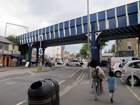
il Ponte della Overground che trovate uscendo dalla stazione
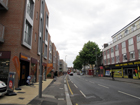
High Road Leyton
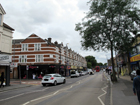
High Road Leyton
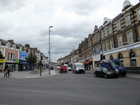
L'incrocio con Lea Bridge Road
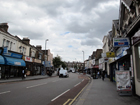
Il solito contesto suburbano londinese, con casette e negozi a livello stradale